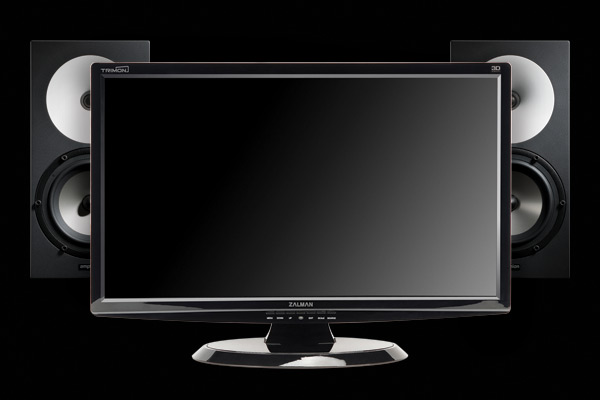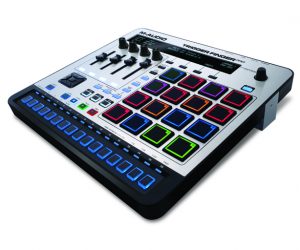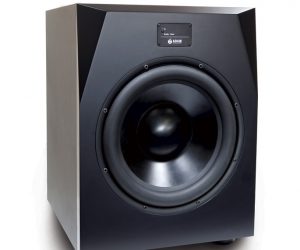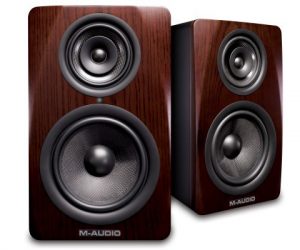
PC AUDIO 109
It’s flexible, easy to upgrade and can be adapted to your changing requirements — all hail the desktop PC!
Column: Martin Walker
Well the computing marketplace is once again being shaken up and thoroughly stirred, with Apple iPad sales expected to drop by 20% in 2015 as jumbo smartphones take over. New models are skinnier than your average ‘haughty couture’ stick figure, with PC maker Lenovo releasing its LaVie Z laptops, claimed to be ‘the world’s lightest 13.3-inch notebook PCs’. They have more computing power than Apple’s new Intel Core M MacBook — as well as two USB 3.0 ports, a HDMI video output and integrated SD card reader compared with the single USB-C port connectivity of the MacBook — yet match or undercut its price. However, as I discussed in Issue 108, choosing a PC notebook suitable for extensive audio use can be a minefield for the musician.
Old fashioned they may be, but the good old desktop PC is still the best bet for guaranteed high audio performance and longevity under fire. You can upgrade the majority of their internal parts as and when the need arises (no soldered-in RAM like the latest Mac Mini range that prevents their memory being increased after purchase). Desktop PCs also offer plenty of ports to plug in a wide range of peripherals simultaneously; including USB and Firewire audio interfaces, external drives for backing up your precious audio material, and even smaller noteboooks/tablets for use as touch-based MIDI controllers, MIDI synth editors/librarians, and the like. All these can be connected via low-cost generic cables that cost a few dollars, rather than the expensive custom white extras offered by Apple.
For more elderly card-based audio interfaces, desktop PC motherboards are still available with PCIe and even ancient PCI expansion slots, and if you favour one of the latest Thunderbolt-based audio interfaces, these can be plugged in via a PCIe expansion card as well. Flexibility has always been the strength of the humble desktop PC, which can adapt via upgrades to suit changing requirements. You’ll never get that sinking feeling if you find you need more ports, since cheap expansion cards are available to add a clutch more of whatever variety you need. And in the unlikely event that a component (graphics card, power supply, hard drive…) fails, you can nearly always replace it too.
PICTURE THIS: SCREEN REFLECTIONS
Enough already I hear you cry — we get the picture! Ironically though, the picture is one area that can cause a few problems for the desktop musician. Ideally your loudspeakers should be perhaps four or five feet apart, and your ears a similar distance away from them. Even when you ditch the dinky notebook format, with its closeup screen, in favour of a larger screen placed a bit further away. It can still end up sitting in front of your loudspeakers, resulting in lots of acoustic early reflections that compromise your stereo image. In this scenario, you’ll notice a significant improvement in the acoustic detail of your mixes if you invest in an even larger graphic monitor that can be placed further back in between your loudspeakers rather than in front of them.
I faced this scenario myself a few months back — the last couple of years I’ve had a 23-inch widescreen monitor mounted on a heavy duty tilt/swivel stand that allowed me to pull it to about two feet away for detailed editing, and then push it back to just in front of my monitor speakers when mixing, but I knew I could do better. So I replaced it with a very affordable 27-inch widescreen monitor in a fixed position right back between my loudspeakers, and the difference was remarkable. When a client next visited my small studio he was convinced I’d done a lot of extra work on his mix, but it had always sounded that good — we just hadn’t been able to hear its unadulterated excellence while the monitor screen added its dose of sonic confusion.
STORAGE: SINGLE CASE OPTIONS
The desktop PC is also very flexible when it comes to storage requirements. It pays to adopt at least one SSD for speedy booting and application launch times, and for those that can afford it, several larger SSDs if you want a totally silent computer. However, for those with smaller pockets, modern mechanical hard drives in conjunction with a decent acoustically-lined case are well nigh silent too, and there’s usually plenty of space inside the typical desktop case for at least four such drives. Many of us still rely on CD/DVD drives for audio CD burning and video duties, but Blu-Ray drives are also easily fitted for those with more expansive storage requirements. Once again, you can change your mind as you please, and still end up with a single case containing all the storage you need rather than a slimline notebook with a rat’s nest of cables emerging from it to cope with your peripheral requirements.
The one thing that undermines the ultimate longevity of the desktop PC in my opinion is Intel’s insistence that each new CPU family it releases must be accompanied by a fresh motherboard with a revised CPU socket. Although an experienced user can change the motherboard, it’s a major undertaking, and only really worth doing if you get at least an additional 50% of processing power in the bargain. Yet even here the PC musician is in a much better position nowadays than a few years ago, since the amount of computing power available in a modern machine is more than sufficient to run huge audio projects. Since it’s likely to be the single most expensive component in any PC by a margin of three or four, just make sure you choose your desktop CPU wisely within your available budget, and it ought to last you for at least several years (mine is coming up to three years old now with little or no sign of running out of steam).
DESKTOP: STILL THE ONE
So there we are. The humble desktop PC may seem a little passé to some, but for the musician it still does its job well, is incredibly versatile, adaptable, repairable, and can be upgraded in a host of ways at relatively low cost. I do feel sorry for those who end up having to buy a new computer to gain more processing power, only to find their perfectly good audio interface has to be abandoned in the process. There’s quite enough built-in obsolescence in the world today without discarding audio gear simply because this new machine lacks the relevant socket to plug it in. So stick with the desktop format, and carry on using what you already have!

















RESPONSES